Media Inquiries?
For quotes or to request an interview, please contact an AU Public Relations Manager at:
KSB - Kogod School of Business on a map
4400 Massachusetts Avenue NW Washington, DC 20016 United StatesThe Kogod School of Business established its Business in the Capital Initiative to provide insight on key regional issues and start productive conversations about improving the greater Washington business climate. Kogod is committed to sharing its research and expertise with policy makers and business leaders to build the greater Washington area economy.
The Business in the Capital Initiative also benefits the future business leaders we are training in our classrooms. As the DC area's oldest business school, Kogod has been educating students for over 75 years, many of whom stay and contribute to the regional economy. The Business in the Capital programs-research papers, industry discussions, speakers and events-create even stronger bonds between our business school and local businesses in order to better prepare our students to work in Washington and the world.
For the third year in a row, the greater Washington area scored well above average on what Millennials look for in a place to live and work, with an overall index score of 127%. The 2017 index is one point higher than 2016 (126%) and two points higher than 2015 (125%).
The Millennial Index assesses how well the Washington area delivers against 33 factors Millennials care about. The base is 100%, which represents the average national score on all factors. Thus, with a 127% index for 2017, Washington is 27% more attractive to Millennials than an average location.
The one point improvement comes largely from continued above-average performance on employment and salaries, two factors that together make up 18% of the total index score. The cost of housing, which accounts for another 5% of the total index score, also improved slightly compared to the national average in 2016. While absolute rents and home prices in the region continued to climb, they rose more slowly than the rest of the country, helping to keep the index score high.
| City | 2017 Millennial Index | Change from 2016 | Population Rank |
|---|---|---|---|
|
San Francisco |
149 |
-2 |
11 |
|
Washington |
127 |
+1 |
6 |
|
Boston |
123 |
-2 |
10 |
|
Denver |
118 |
+7 |
19 |
|
New York |
114 |
-- |
1 |
|
Seattle |
114 |
+8 |
15 |
|
Minneapolis |
107 |
+2 |
16 |
|
Chicago |
105 |
-1 |
3 |
|
Atlanta |
103 |
+4 |
9 |
|
Los Angeles |
102 |
+2 |
2 |
|
San Diego |
101 |
+1 |
17 |
|
San Diego |
101 |
+1 |
17 |
|
Dallas |
101 |
+1 |
4 |
|
Philadelphia |
101 |
+4 |
7 |
|
Phoenix |
100 |
+4 |
12 |
|
Detroit |
100 |
+6 |
14 |
|
Tampa |
99 |
+3 |
18 |
|
St. Louis |
95 |
-1 |
20 |
|
Miami |
95 |
-1 |
8 |
|
Riverside |
90 |
-2 |
13 |
|
Houston |
85 |
-6 |
5 |
| City | Salary Needed to Buy a Home | Average Annual Salary | # of Average Salaries Needed |
|---|---|---|---|
|
San Francisco |
$171,331 |
$69,110 |
2.5 |
|
San Diego |
$116,120 |
$55,480 |
2.1 |
|
Los Angeles |
$115,069 |
$55,650 |
2.1 |
|
New York |
$99,151 |
$61,790 |
1.6 |
|
Miami |
$71,799 |
$46,160 |
1.6 |
|
Seattle |
$93,418 |
$61,170 |
1.5 |
|
Boston |
$97,465 |
$64,080 |
1.5 |
|
Riverside |
$67,750 |
$46,820 |
1.4 |
|
Denver |
$79,459 |
$55,910 |
1.4 |
|
Washington |
$84,503 |
$68,000 |
1.2 |
|
Dallas |
$59,518 |
$50,350 |
1.2 |
|
Chicago |
$62,731 |
$53,320 |
1.2 |
|
Tampa |
$49,474 |
$45,510 |
1.1 |
|
Houston |
$56,600 |
$52,870 |
1.1 |
|
Philadelphia |
$56,195 |
$53,450 |
1.1 |
|
Minneapolis |
$56,245 |
$55,010 |
1.0 |
|
Phoenix |
$48,426 |
$47,540 |
1.0 |
|
Atlanta |
$43,388 |
$50,720 |
0.9 |
|
St. Louis |
$40,822 |
$48,240 |
0.8 |
|
Detroit |
$42,329 |
$50,960 |
0.8 |
An overview of the responses
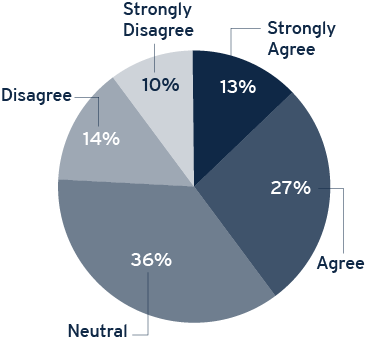
DC is a manageable, highly livable mid-size city
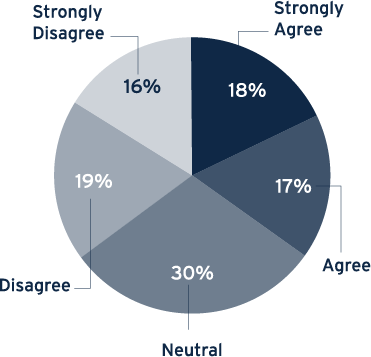
It’s too stressful to stay in the DC area permanently



My commute is killing me

Telecommuting is a viable option for my job
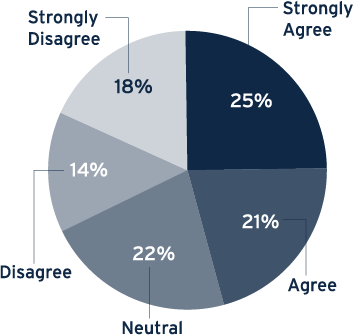
I basically live paycheck to paycheck
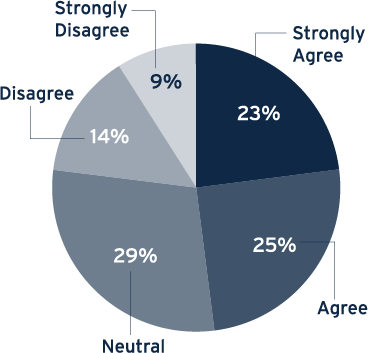
I work hard but I can’t seem to get ahead financially
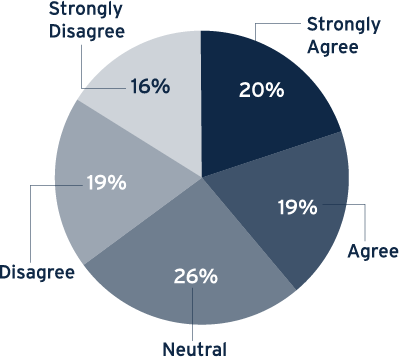
I don’t love my job but I can’t afford to quit
Washington, DC, and its surrounding area remains attractive to Millennials, but that doesn’t mean they will stay in the region forever. Many of the highly educated, career-focused Millennials are ready, willing and able to move for a better job, a higher salary or a chance to try something new. Those at the other end of the spectrum–with lower incomes and fewer prospects–have been watching costs rise along with the city's popularity and know that they will eventually be forced to leave to make ends meet. The tide of Millennials into the Washington area, which has been slowing over the past few years, may now be at an end. The city continues to have high salaries and great amenities, but the lack of affordable starter homes and worsening traffic is potentially transforming Washington from a highly livable mid-size city into an expensive career stepping-stone on the way to settling down somewhere cheaper, safer and less hectic. The majority of Millennials living in the Washington area are content, and with the right incentives from their employers (increasing salaries, support and challenges at work, family-friendly policies, better commuting options) many can transition from single to settled without moving away.
The Kogod Greater Washington Index: Millennials was created using publicly available data weighted based on survey responses from a representative pool of greater Washington area Millennials. The survey was conducted by Prizma Research in the fall of 2017. It was conducted online via computer, tablet and mobile devices. Five hundred and two (502) responses were gathered from adults ages 21-35 who are non-temporary residents of the Washington metropolitan statistical area (MSA). Younger Millennials were excluded from the survey to focus on adults with more experience making decisions about living and working in the greater Washington area.
The index uses a variety of sources to measure how the greater Washington area compares to other places to live and work in the United States. Whenever possible, the greater Washington area was compared to the total US incidence, average or median. When complete tracking data was not available, the greater Washington area was compared to average values for all cities measured by the source.
The Millennial Index is a weighted average comparison of how well the greater Washington area performs on 33 factors and how important each factor is to Millennials residing in the region. Below is a detailed summary of how the scores were developed.
Importance Score: For each of the 33 factors, survey respondents were asked to rate how important each item was when deciding where to live and work. Ratings were done on a five-point scale from "1 - not at all important" to "5 - extremely important." The importance score was calculated using the percentage of respondents who rated the factor a "5" or "4" discounted by the percentage who rated the factor a "1" for not at all important. This method avoids the common problem of regression to the mean and allows clearer differentiation between the factors.
Delivery Score: The delivery score rates how well the greater Washington area is delivering against the 33 factors. The delivery scores are calculated as an index between the Washington MSA value and the national average (or composite of available cities when national data is not available) for each measure. As with any index, 1.0 (100%) means the greater Washington area is on par with the nation. Values over 1.0 indicate DC is doing better than the national average and values below 1.0 indicate DC is doing worse. For most of the factors, bigger values are better, such as salary levels or amount of parkland. In this case, the greater Washington area value is the numerator and the national average is the denominator. For some factors, smaller values are more desirable, such as crime rate or commuting time. In those cases, the national value is the numerator and the greater Washington area is the denominator.
Factor Weights: To aggregate importance and delivery scores for each major category-Jobs, Affordability, Career, Amenities and People-each factor within the category was weighted based on its relative importance to the other factors in the category. For example, if four factors comprise the category and their individual importance scores are 50, 30, 15 and 5 (totaling 100 points), then half of the category score comes from the first factor, 30% from the second, 15% from the third and 5% from the fourth.
Category Weights: To arrive at an overall score for how well the greater Washington area is doing regarding Millennial desires, the five category delivery scores were combined into a weighted average. The weights (relative importance) for each of the five categories were calculated by combining results from two questions on the Millennial survey-one which required respondents to rank each category according to how important it is, and one which asked respondents to rate the importance of each category on the five point importance scale.
|
Availability of jobs |
Bureau of Labor Statistics |
|
Salary levels in the area |
US Census |
|
Average number of hours people work each week |
Wallethub |
|
Number of innovative companies in the area |
Innovation-cities.com |
|
Number of companies nationally recognized as a "best place to work" |
Glassdoor.com |
|
Number of area employers whose mission includes social and community responsibility |
Bureau of Labor Statistics |
|
Ease of commuting to work |
US Census |
|
The number of colleges, universities and graduate school programs in the area |
Department of Education |
|
The number of medium and large employers |
US Census |
|
Availability of professional positions |
US Census |
|
Resources available to support entrepreneurs and start-ups |
National Venture Capital Association |
|
The growth of the area's job market |
Bureau of Labor Statistics |
|
Number of people similar in age to me |
US Census |
|
Number of people with a similar education level as me |
US Census |
|
Availability of professional positions |
US Census |
|
Diverse population |
US Census |
|
International population |
US Census |
|
Number of social clubs, sports leagues and organized activities to participate in |
Meetup.com |
|
Number of volunteer opportunities |
Corporation for National and Community Service |
|
Ability to walk, bicycle or use public transportation to get around |
US Census |
|
Ease of traveling to other cities or countries via plane, train or bus |
Bureau of Transportation Statistics |
|
Weather |
Best Places |
|
Number of museums, attractions, sports events and things to do |
Institute of Museum and Library Services; TripAdvisor |
|
Amount of green space and park land |
Trust for Public Land |
|
Number of bars and restaurants |
US Census |
|
Crime rate |
FBI |
|
Availability of apartments to rent |
US Census |
|
Housing costs |
Council for Community and Economic Research |
|
Ability to live and get around without owning a car |
Bureau of Transportation Statistics; US Census |
|
Cost of groceries |
Council for Community and Economic Research |
|
Cost of goods and services |
Council for Community and Economic Research |
|
Cost of utilities such as electricity and internet |
Council for Community and Economic Research |
|
Cost of childcare |
Care.com |
|
Cost of utilities such as electricity and internet |
Cost of health care |
|
Cost of childcare |
Council for Community and Economic Research |